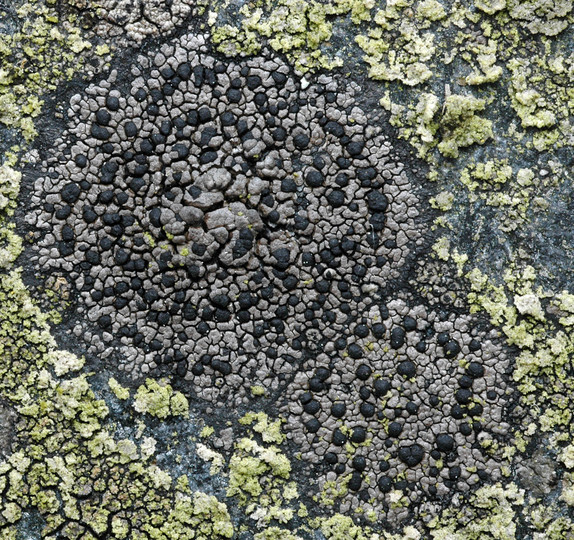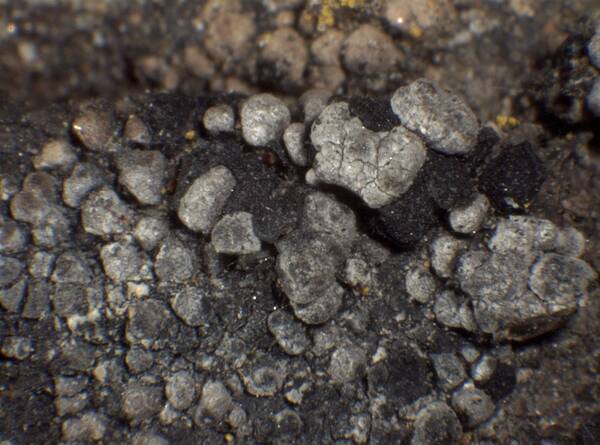Rhizocarpon geminatum Körb.
Syst. Lich. Germ.: 259, 1855.
Synonyms: Biatorina concreta (Ach.) Mudd; Buellia concreta (Ach.) Zwackh; Rhizocarpon concretum (Ach.) Zahlbr.; Rhizocarpon disporum auct. non (Nägeli ex Hepp) Müll. Arg.
Distribution: N - Frl, Ven, TAA (Nascimbene & al. 2022)I, Lomb (Brackel 2010), Piem (Isocrono & al. 2004, Isocrono & Piervittori 2008, Favero-Longo & al. 2015), VA (Piervittori & Isocrono 1999, Isocrono & al. 2008, Favero-Longo & Piervittori 2009, Matteucci & al. 2015c), Emil (Valcuvia & Delucchi 2001, Fariselli & al. 2020), Lig (Giordani & Brunialti 2000). C - Tosc, Sar. S - Bas (Nimis & Tretiach 1999), Cal (Puntillo 1996).
Description: Thallus crustose, episubstratic, areolate, grey to grey-brown, delimited by a black prothallus, forming patches to 10 cm in diam. (usually less). Areoles rounded to weakly angular, flat to usually convex, 0.3-0.8 mm wide, scattered to contiguous. Cortex poorly differentiated, 5-15 µm thick, overlain with a 5-15 µm thick epinecral layer; medulla white or yellowish. Apothecia lecideine, black, arising among the areoles, 0.4-0.6(-1) mm across, with a flat to weakly convex, dull, epruinose disc, and a rather thin, finally excluded proper margin. True exciple thin, brown-black in outer part, pale brown within, K+ reddish violet, often with crystals dissolving in K; epithecium reddish brown to brown, 15-25 µm thick, K+ reddish violet, with a granular epipsamma dissolving in K; hymenium colourless, 100-140 µm high; paraphysoids coherent, slightly branched in upper part; hypothecium dark brown, K-. Asci 2-spored, clavate, fissitunicate, with a well-developed tholus, lacking an ocular chamber, Rhizocarpon-type. Ascospores muriform, at first pale green, but soon olive-brown to brown, ellipsoid, 40-68 x (15-)18-28(-32) µm, halonate. Pycnidia frequent, black, subglobose, mainly on the prothallus. Conidia hyaline, filiform, 8-12 x 0.3-0.6 µm. Photobiont chlorococcoid. Spot tests: medulla K+ weakly yellow or occasionally K+ red, rarely K-, C-, KC-, P+ yellow to red or P-. Chemistry: without lichen substances, or with variable amounts of stictic, and/or norstictic, and/or rhizocarpic acids. Note: a widespread lichen of dry-continental areas, found on steeply inclined faces of base-rich or weakly calciferous siliceous rocks, both in natural and man-made substrata (e.g. on roofing tiles, walls); a chemically heterogeneous species, probably less thermophilous than the closely related Rh. disporum.
Growth form: Crustose
Substrata: rocks
Photobiont: green algae other than Trentepohlia
Reproductive strategy: mainly sexual
Commonnes-rarity: (info)
Alpine belt: rare
Subalpine belt: rather rare
Oromediterranean belt: rare
Montane belt: very rare
Submediterranean belt: extremely rare
Padanian area: absent
Humid submediterranean belt: very rare
Humid mediterranean belt: absent
Dry mediterranean belt: absent

Predictive model
Herbarium samples
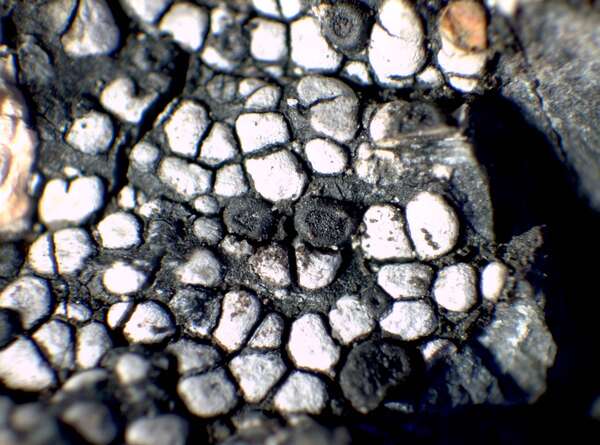

P.L. Nimis; Owner: Department of Life Sciences, University of Trieste
Herbarium: TSB (13637)
2001/12/01
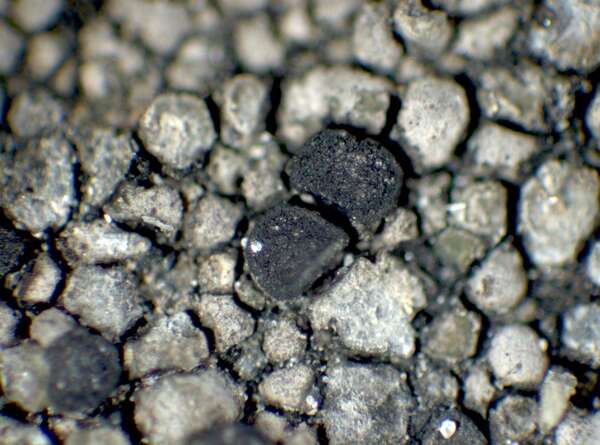

P.L. Nimis; Owner: Department of Life Sciences, University of Trieste
Herbarium: TSB (34630)
2002/01/22
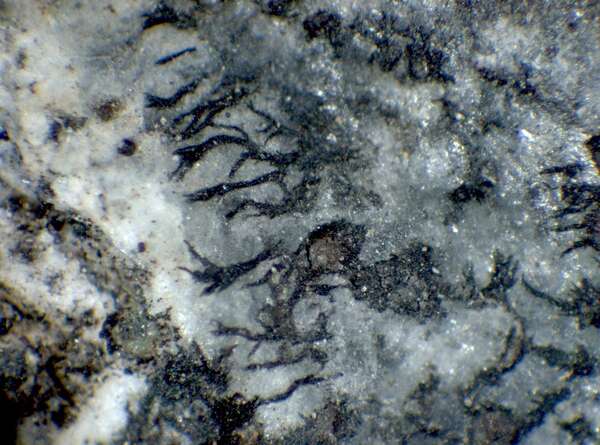

P.L. Nimis; Owner: Department of Life Sciences, University of Trieste
Herbarium: TSB (34630)
2002/01/22
prothalline strands developing from young areole
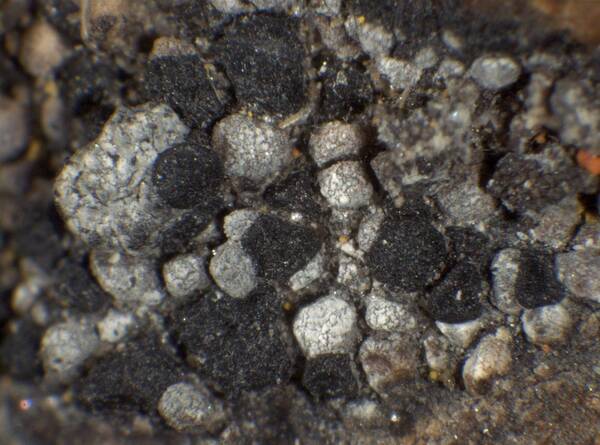
Miris Castello - CC BY-SA 4.0; Owner: Department of Life Sciences - University of Trieste
Antarctica, Terra Nova Bay.
Herbarium: TSB - Antarctic Herbarium
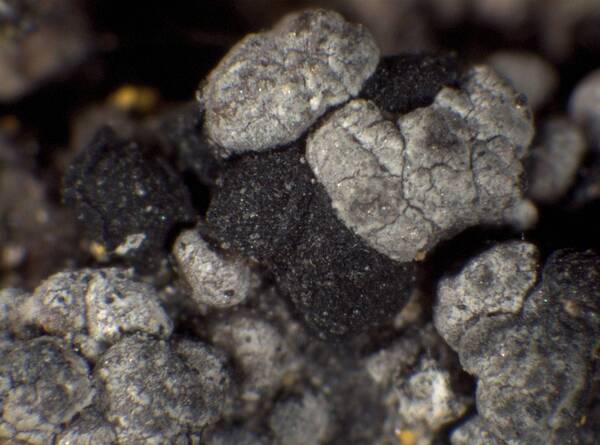
Miris Castello - CC BY-SA 4.0; Owner: Department of Life Sciences - University of Trieste
Antarctica, Terra Nova Bay.
Herbarium: TSB - Antarctic Herbarium
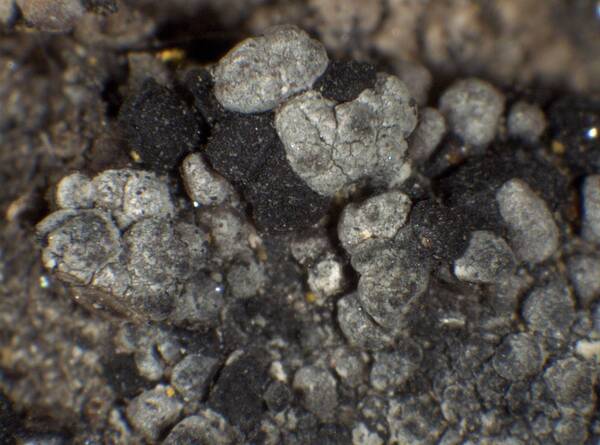
Miris Castello - CC BY-SA 4.0; Owner: Department of Life Sciences - University of Trieste
Antarctica, Terra Nova Bay.
Herbarium: TSB - Antarctic Herbarium
Growth form: Crustose
Substrata: rocks
Photobiont: green algae other than Trentepohlia
Reproductive strategy: mainly sexual
Commonnes-rarity: (info)
Alpine belt: rare
Subalpine belt: rather rare
Oromediterranean belt: rare
Montane belt: very rare
Submediterranean belt: extremely rare
Padanian area: absent
Humid submediterranean belt: very rare
Humid mediterranean belt: absent
Dry mediterranean belt: absent

Predictive model
| Herbarium samples |


P.L. Nimis; Owner: Department of Life Sciences, University of Trieste
Herbarium: TSB (13637)
2001/12/01


P.L. Nimis; Owner: Department of Life Sciences, University of Trieste
Herbarium: TSB (34630)
2002/01/22


P.L. Nimis; Owner: Department of Life Sciences, University of Trieste
Herbarium: TSB (34630)
2002/01/22
prothalline strands developing from young areole

Miris Castello - CC BY-SA 4.0; Owner: Department of Life Sciences - University of Trieste
Antarctica, Terra Nova Bay.
Herbarium: TSB - Antarctic Herbarium

Miris Castello - CC BY-SA 4.0; Owner: Department of Life Sciences - University of Trieste
Antarctica, Terra Nova Bay.
Herbarium: TSB - Antarctic Herbarium

 Index Fungorum
Index Fungorum
 GBIF
GBIF
